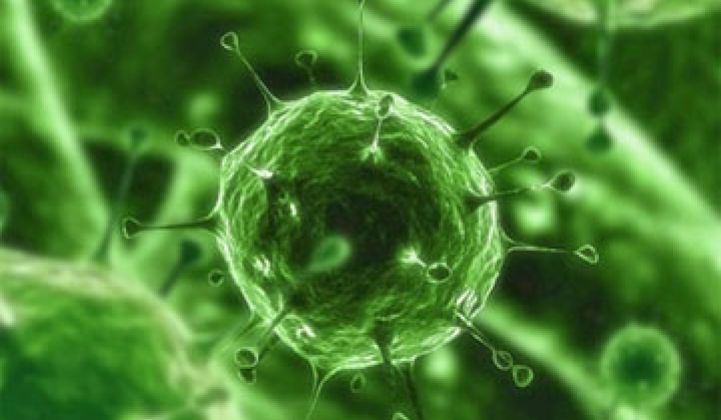Viruses: they are the latest candidate for energy storage.
A team of scientists lead by material science professor Angela Belcher has genetically modified a virus that can exploit sunlight to split water into oxygen and hydrogen. If it works and can be commercialized, the process could help solve the vexing problem of energy storage and the equally vexing problem of producing hydrogen in a reasonable and cost-effective way. Hydrogen remains -- in theory -- one of the most efficient vehicles for storing energy: the gas can be bottled until the electrons needed to be stripped from the hydrogen molecules. Unfortunately, most manufacturers generate hydrogen by cracking methane, thereby releasing large amounts of carbon dioxide, or by electrolyzing water, an energy-intensive process that can be expensive.
The group genetically modified a virus, M13, to bind a catalyst (iridium oxide) and a biological pigment. The pigment absorbs sunlight while the catalyst, along with the absorbed energy from the sun, splits the water molecule. The reaction gives oxygen molecules, protons and electrons as byproducts.
The team next wants to devise a virus that can reassemble the protons and electrons into storable hydrogen. To keep the viruses from clumping, they are coated in a microgel.
The virus in the reaction largely acts as a wire or a scaffold, i.e., as a structure to arrange the pigment and catalyst in an efficient and effective manner. The virus is not transforming water through a metabolic process, such as the way that yeast consume sugar to produce wine. Other researchers, such as BioCee out of the University of Minnesota, are concentrating on metabolic transformations. BioCee has received Department of Energy grants to devise microbes that will absorb sunlight and carbon dioxide and turn them into liquid fuels through the magic of the microbial equivalent of your digestive system.
Stanford professor Jim Swartz in the mid-2000s discovered a naturally occurring microbe that metabolizes sunlight to split water. Unfortunately, the microbe also dies in the presence of oxygen.
Daniel Nocera, another MIT professor, has created a company called Sun Catalytix that is focusing on trying to devise catalysts with cobalt and other materials that can reduce the amount of energy required to split water. They'll be talking. In a way, Belcher's work represents almost a middle ground between the groups trying to exploit organisms for chemical transformations and the chemistry crowd that is coming up with classic chemistry catalysts. It involves a bug, but the biological organism serves as a piece of lab equipment.
Belcher is one the leaders in the field of industrial microbiology. Cambrios Technologies, a company that commercializes her work, has devised microbes that can secrete semiconductor insulators and materials that can detect weak spots and stress fractures on airplane wings. Last year, she published a paper on a virus that could secrete proteins that could lead to chemical reactions that could form anodes and cathodes for batteries.



